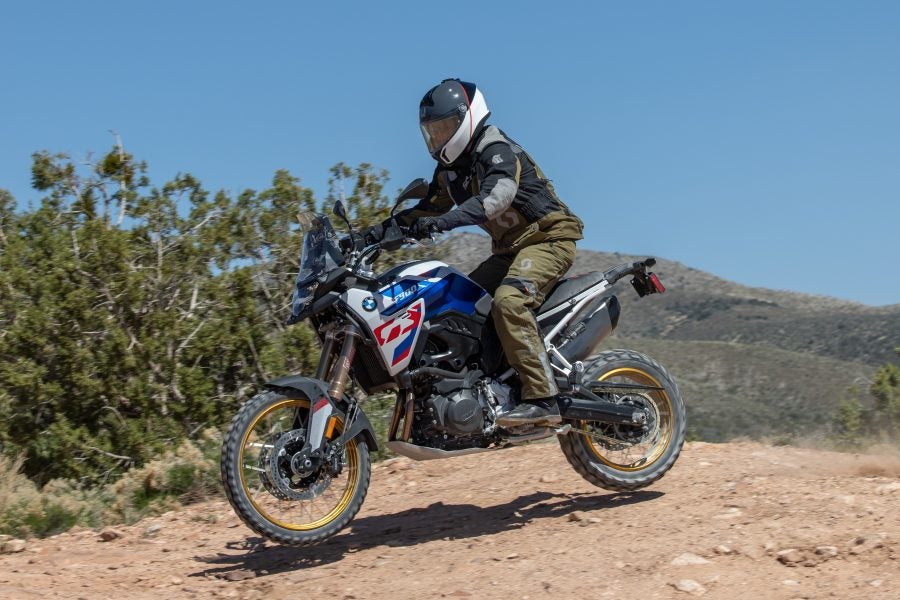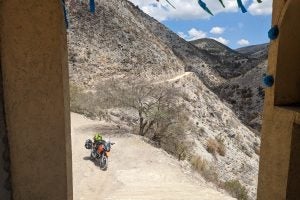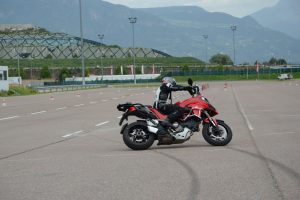Photos: BMW
Compromise. We all have to do it. None of us like it. Peruse the comments on ADVRider whenever a debate breaks out about what constitutes the ideal ADV bike and a casual observer would be led to believe we’re suffering through a drought of nearly un-rideable motorcycles. Modern motorcycles, claim members of the keyboard militia, are too powerful (or not powerful enough), lack suspension travel (or have too much), are too heavy for the dirt and, yet, too fickle on pavement to two-up tour the lower 48 by Interstate. When it comes to motorcycles we collectively turn into ten-year-olds—we want what we want and we want it now. Reason, logic, and common sense be damned. Which is why redesigning a mid-sized ADV bike is wretchedly difficult.
The modern ADV bike wears many hats. Depending on its design brief, it’s today’s standard, tourer, sport-tourer, dirt bike and all-round knockabout. And of all the segments the ADV bike occupies, none is more difficult to successfully navigate than the “upper-midsize” (in BMW-speak) category. In its presentation, BMW went to great lengths to demonstrate that with its new F900GS they’re gunning for the market leader: KTM. According to BMW’s pie-chart, if you toss KTM’s label-mate Husqvarna into the mix, the KTM/Husky duo have an astounding 43 percent market share in the category compared to a mere 18 percent for BMW. Boil this all down in a pot and it’s clear BMW have one particular model on their mind: KTM’s 890 Adventure R.

Dust, baby heads, and bent rims. Higher ‘bars and lower footpegs make the F900GS a breeze to stand up on.
BMW is so fixated on the 890 that in their presentation they drew what they believed to be a favorable comparison for their bike to the KTM. The BMW has a smidgeon less torque, a whisker less suspension travel, costs a nice dinner out for two with a mid-range bottle of wine more than the KTM and, with a capacity of 3.8 gallons, carries significantly less fuel than the KTM’s 5.3 gallons. Based strictly on the numbers, I question whether this comparison favors the KTM more than the BMW.
Tired of being considered too soft compared to the KTM, in transitioning the F850GS to the F900GS, BMW is closer to the bike many consider the benchmark in the class. Employing the words “reduced to perform” as their mantra, very few components are carried over from the old bike. The claimed weight loss of 22 pounds comes primarily from a plastic fuel tank that replaces steel, a lighter muffler, and a pared-down rear subframe. Revised bodywork gives the BMW a more muscular look, and the overall impression—vs the 850—is that the 900 has cut the booze and the one-night-stands from its self-indulgent lifestyle and hit the gym in an attempt to become a more competent dirt bike. It’s no easy task.
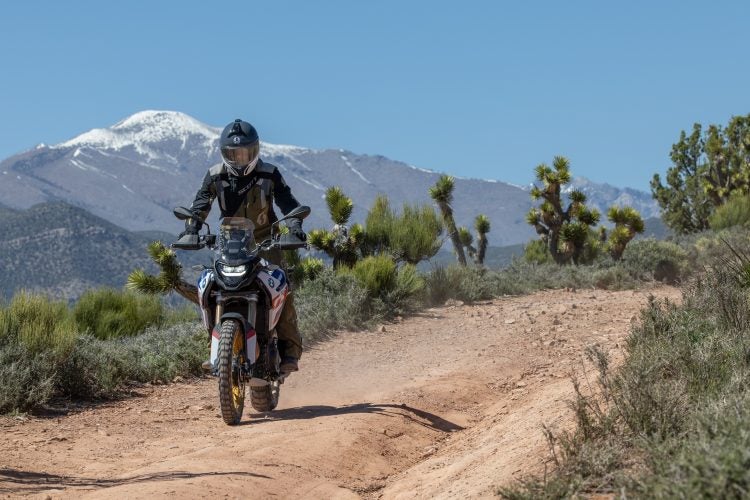
Long gone are the asymmetrical headlights of the David Robb design era at BMW. We live in a world where BMWs and Moto Guzzis are becoming far less quirky than they once were. What is the world coming to?
Despite the “upper-midsize” moniker, turning 900 cc motorcycles into competent dirt bikes is a bit of a stretch. And later this morning—once we meet the dirt—we’ll find out if the BMW met its goal. But first we have to hit the highway to escape the hangover that is Las Vegas morning traffic. Being mired in traffic is as useful for determining the merits of a machine as it is crushing for the spirit. Want to understand how well a machine fuels or shifts or brakes? Spend time in traffic with Midwesterners despairing after having gambled away retirement savings. The BMW’s manners in this milieu are unimpeachable. A predictably progressive clutch action needs only a light pull and the shifting is direct and communicative. The fuelling is excellent—the bike pulls cleanly and smoothly from low revs and doesn’t display the abruptness that plagues many motorcycles. (As backwards as old-school carburation can be, it’s rare that an injected bike can match the smoothness and progressiveness of a properly set up carburetor.)
With a 15 mm higher handlebar and footpegs dropped 20 mm, the BMW is ideal for the urban thrash. With its parallel-twin engine enlarged from 853 cc to 895 cc, and with a claimed increase of 15 horsepower to 105, the BMW doesn’t lack giddy-up. With a torque curve as flat as the desert, the BMW has decent thrust when you need it and, like most parallel twins, it’s more than a little anodyne and lacks the quirky personality of the boxer twins—which, depending on how you respond to the chortle of a boxer, may be a good or a bad thing.
Cruising between 80 and 90 mph on the highway, the BMW feels very much like an amalgam of a road bike crossed with a dirt bike. You can feel the BMW’s harder-edged personality right from the get-go. Twenty-one-inch front wheels (suspended by a stout 43 mm Showa fork) have a slightly flighty feeling at speed on pavement—it’s no surprise most road-only bikes have 17- or 19-inch front wheels—but the bike tracks straight and true. Another concession to a life intended to be lived as much on dirt as on pavement is the fitment of two-piston-caliper Brembo front brakes. They get the job done on pavement, but if you’re familiar with more common four-piston-caliper brakes, they’re a little uninspiring.

The upside of a 21-inch front wheel is that steering is light and it’s easy to accurately hold a cornering line. The downside is that road feedback can’t match the meaty footprint of a 19- or 17-inch tire. But, in the dirt, the 21-incher is essential.
A clear disappointment on the BMW, especially at this price point (more on that in a moment) is the non-adjustable windscreen. Even just a few inches of range can make a huge difference in wind buffeting the head, especially if, like me, your torso runs on for ages. A pleasant surprise is how the twin, with its staggered 270- and 450-degree firing order, purrs at speed. There’s enough rumble in the engine bay to let you know you’re on a motorcycle (shouldn’t that be enginecycle?) but not so much commotion that it aggravates. Curiously, the BMW’s engine is perhaps more aurally inspiring than motivationally uplifting. But, again, this is less a characteristic of BMW twins than parallel twins in general.
Compromise. Back to that word. As soon as we exit the highway for some time in the dirt—a 30-mile roundtrip down a desert access road that ends at the whimsically-named Peekaboo Canyon turn around—I go from wishing I’d had the new R1300 GS for the superslab to suddenly craving a 450 enduro between my knees. (Oh no! I’ve become yet another perpetually disappointed keyboard warrior.) Within a half-mile I’m reminded that to ride successful in the dirt requires a deep breath and letting go. The dirt road is a far cry from technical single-track, but it’s littered with baby-head-sized rocks that give the bike—and the rider—a good walloping. With my legs snug to the bike’s flanks, my arms loose, and my eyes up I give the bike some juice, get it up on plane, surf the dirt, and revel in the bike’s capabilities. Those two-piston-caliper front brakes, that seemed wanting on pavement, are ideal on dirt. What’s less than ideal are the number of bent wheel rims and flattening tires from rock damage. Over lunch, the BMW crew whacked away at a number of rims with a massive hammer to reverse the damage enough that tires could hold air. Not exactly what you’d hope for from a 30-mile off-road ride at a sedate pace.
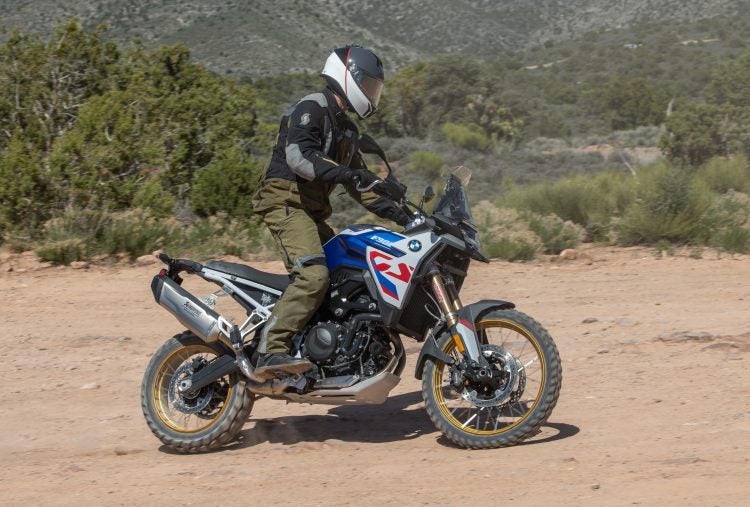
Leaner and (slightly) meaner, the BMW is as visually lighter as it is actually lighter. Pared-down subframe looks like nothing at all and the bodywork and nose beak have been pruned to the minimum. Akro exhaust can is standard.
At a claimed 482 pounds fully-fuelled, the BMW and, indeed, all of its competitors, can hardly be called flyweights. Simply put, 900 cc “middleweights” are as good as you are. I’ve watched riders on litre-plus ADV bikes do things I couldn’t do on a trials bike, so before I criticize the machinery, it’s time to look in the mirror. For many of you, I suspect, the BMW is a bike that will see mostly road use sprinkled with some bad road/off-road usage. And for that it’s about as good an amalgam of dirt capability and road manners as is available today.
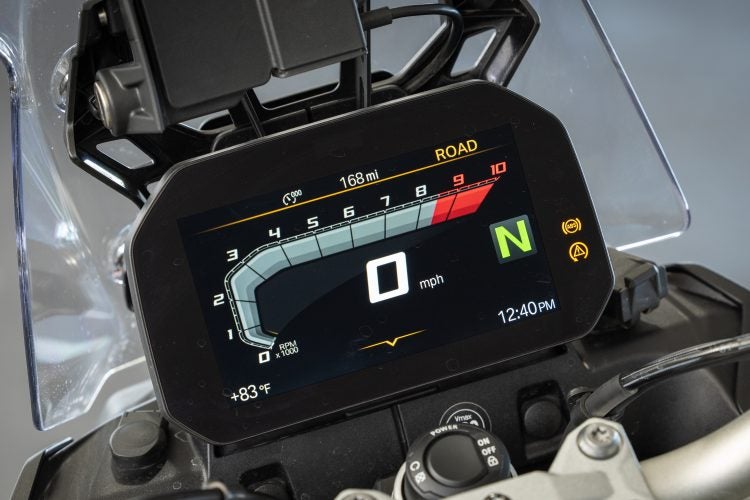
Thin-film-transistor dash is legible even in bright sunlight while wearing a tinted visor. Now that’s progress. Riding modes are useful but, most importantly, the bike is balanced and easy to manipulate between the knees.
At the risk of lulling you into a coma, it’s time in this review to address the issue of BMW pricing and packages. Not since the nautically-themed 1979 Bill Blass edition Lincoln Continental has a vehicle had a more byzantine list of packages and options than the BMW. The $13,495 base price (all funds USD) excludes the $695 “destination” fee and the bike’s white, red, and blue “GS Trophy” color scheme adds another $545. Add to that the $1,750 premium package (ride modes pro, quick-shifter, etc.), the $1,495 Enduro Package Pro (high handlebars, sport suspension, etc.) and a modest $65 for off-road tires, the price balloons to a substantial $19,055. And if that doesn’t give you enough to think about, perhaps you’ll be tempted by the $15,995 “off-road” package, which includes off-road tires and the “dynamic enduro package.” And this is just a simplified overview. You could spend days deciphering BMW-speak, and, if you dig deep enough, I suspect you’ll find a baby-blue nautically-themed vinyl roof option.
The F900GS is a substantially more muscular motorcycle than the F850GS it replaces, and while our test bikes were outfitted with all the bells-and-whistles, I think it’s important to remember that options and modes and packages do not the motorcycle make. Perhaps most important on a bike that’s supposed to tick-all-the-boxes one can tick on a motorcycle is balance. Does the bike feel manageable? Is the fuelling smoothly progressive? And this: does it want to make you head into the wilds? The F900GS makes me want to get out of Dodge. Let’s call it mission accomplished.


